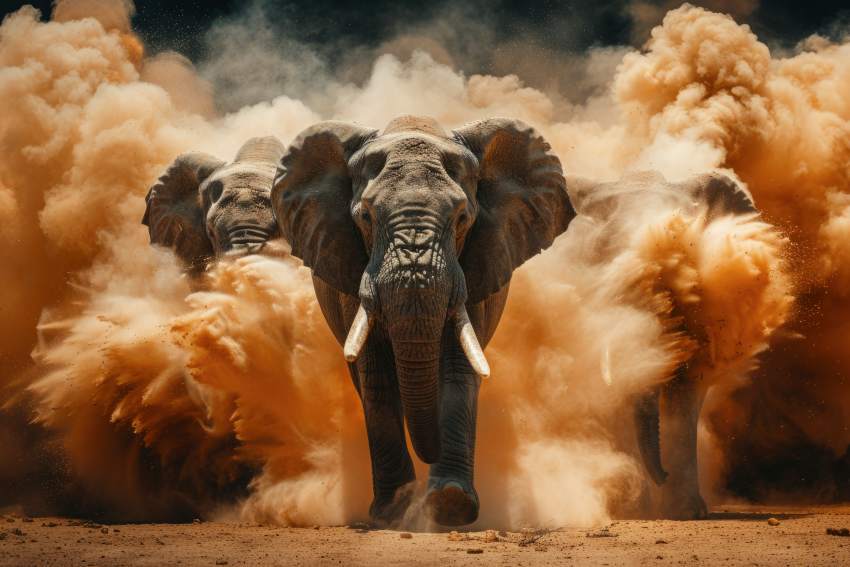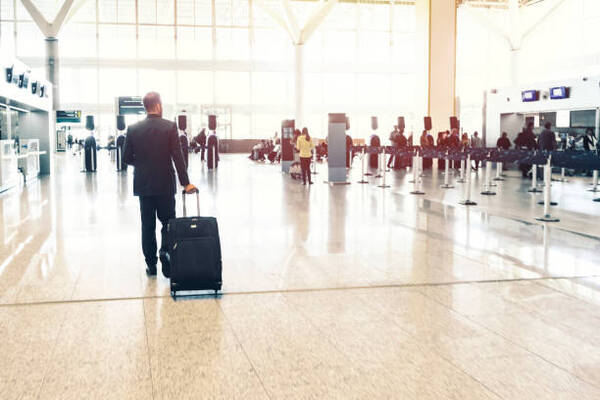≡-Elephant Attacks in Zambia, Kenya and Tanzania: What It Means for Safari Tourism and Safety, Know More – Viral of Today
<> Viral of Today <>
Home
»
TRAVEL NEWS UPDATES
»
Elephant Attacks in Zambia, Kenya and Tanzania: What It Means for Safari Tourism and Safety, Know More
Saturday, July 5, 2025
The recent killings of two tourists, Alison Jean Taylor from New Zealand and Easton Janet Taylor from the UK, in Zambia’s South Luangwa National Park have again highlighted the dangers of safari tourism. While en route to a neighboring camp, the two women were charged by a protective mother elephant guarding her calf. In spite of efforts to defend them, the two women were killed instantly. This accident, which happened on July 3, 2025, has highlighted the dangers lying in wait at walking safaris in Africa, where the behavior of wildlife cannot be predicted and is occasionally fatal.
This isn’t the first time such an incident has occurred. In recent years, safari-goers in various African countries have been fatally injured by wildlife, particularly elephants, known for their unpredictable behavior when threatened or when protecting their young. While safaris remain one of the most popular forms of travel to Africa, these tragic incidents raise important questions about safari safety, the responsibility of tour operators, and how tourism in wildlife reserves is regulated to prevent such attacks.
The South Luangwa Tragedy: A Detailed Account
The South Luangwa National Park in Zambia is renowned for its diverse wildlife and pristine landscapes, drawing thousands of tourists each year. The park is one of Africa’s most famous safari destinations, known for offering visitors the chance to see the Big Five in their natural habitat. The Taylor sisters were part of a guided walking safari when the attack occurred. According to local police, the group had initially spotted the elephant and calf from a distance and diverted their path, yet the elephant charged unexpectedly. Alison, who was reported to have a leg issue, was the first to be caught by the elephant.
In response, authorities at the park confirmed that the elephant had been shot at to prevent further harm, and the park’s management is currently conducting an investigation into the tragic event. The Zambia Ministry of Tourism released a statement expressing its condolences and reminding tourists that while the country’s parks offer unparalleled wildlife experiences, these experiences occur in wilderness settings where wildlife can behave unpredictably. This message underlines the unpredictability of safaris, where even experienced guides may struggle to predict and mitigate the risks posed by wild animals.
Similar Incidents in Other Safari Destinations
This tragic event is part of a broader pattern of elephant attacks on tourists in Africa, a reality that has raised concerns within the tourism industry. In South Africa’s Kruger National Park, similar attacks have occurred in recent years. In 2022, a tourist was fatally injured when an elephant, startled during a game drive, charged a vehicle. While not as frequent as encounters between animals and vehicles, the risks of walking safaris—where tourists are closer to animals—are especially high.
Kenya, home to the famous Maasai Mara and Amboseli National Park, has also witnessed such incidents. In 2021, an American tourist was killed in the Maasai Mara after a confrontation with a group of elephants, once again during a walking safari. These incidents are not just tragic for the victims but also have a ripple effect on the local tourism industry. While elephants are revered in African culture and wildlife conservation efforts continue to thrive, these events underscore the delicate balance between protecting both tourists and wildlife.
In addition to elephants, other dangerous wildlife, including lions, buffaloes, and rhinoceroses, have also been involved in fatal incidents with tourists in Africa. However, elephants are often the focal point due to their size, strength, and tendency to become aggressive when they feel threatened.
Tourism and the Elephant Dilemma: A Delicate Balance
While wildlife tourism, particularly safaris, has become a cornerstone of many African economies, the rising number of such incidents threatens to harm the reputation of safari destinations and impact the livelihoods of those reliant on tourism. According to the United Nations World Tourism Organization (UNWTO), Africa’s wildlife tourism sector generates billions of dollars annually, with safaris making up a large portion of that revenue. South Africa, Kenya, Tanzania, and Zambia are some of the top beneficiaries of this tourism.
However, as incidents involving elephant attacks and other wildlife-related fatalities increase, tourists may become more hesitant to book walking safaris or other high-risk activities. This could lead to a reduction in the number of visitors, which would directly affect local economies, job markets, and conservation programs funded by tourist dollars.
On the other hand, some argue that these incidents are isolated and do not represent the entire safari experience. The vast majority of safaris are conducted safely, and elephant attacks, though tragic, are rare in the context of overall safari tourism. Still, the question remains: How can safari tourism balance the need to preserve the integrity of wildlife encounters with the safety of tourists?
Regulating Safari Safety: What Needs to Change?
In light of these incidents, tour operators, national parks, and governments across Africa are being urged to reevaluate the safety protocols for walking safaris and wildlife viewing. While safari operators are typically required to follow strict safety guidelines, the nature of wildlife tourism means that many aspects of it remain unpredictable.
One potential solution could be the stricter regulation of walking safaris, ensuring that only experienced, well-trained guides lead these tours. While guides typically have in-depth knowledge of animal behavior and how to manage potentially dangerous situations, more comprehensive safety measures—such as ensuring tourists are equipped with safety equipment like communication devices and training on what to do if confronted by an animal—could reduce the risks involved.
Additionally, increased monitoring of animal behavior could be implemented, particularly for elephants, which are highly territorial and can become aggressive if they feel threatened. Some parks are already taking steps to better track the movements of elephants and other potentially dangerous animals to ensure tourists are kept a safe distance from them.
Impact on Conservation Efforts and Local Communities
The tourism industry in Africa is not only a major economic driver but also a key component of wildlife conservation efforts. Entrance fees to national parks, guided tours, and safari bookings directly contribute to conservation programs that protect endangered species, including elephants.
However, the negative publicity generated by these incidents may discourage tourists from visiting affected areas, which could deprive these regions of vital funding for conservation projects. Local communities also depend on tourism for jobs and income, as it sustains everything from hotel staff to wildlife rangers.
Furthermore, these incidents bring attention to the need for more robust conservation education for tourists. While many visitors understand the importance of conservation, raising awareness about the challenges and potential risks of interacting with wildlife could help mitigate future accidents.
Conclusion: Striking a Balance Between Adventure and Safety
The tragic deaths of the two tourists in Zambia’s South Luangwa National Park are a stark reminder of the unpredictable nature of wildlife tourism. While the allure of safaris and the opportunity to witness majestic creatures in their natural habitat is undeniable, these incidents underscore the importance of prioritizing safety alongside adventure.
Tourism boards, wildlife operators, and governments must work together to ensure that safari tourism remains both a safe and sustainable experience for all involved. This means enhancing safety protocols, educating tourists about the potential risks, and ensuring that conservation efforts continue to thrive with the support of responsible tourism. If handled correctly, this balance can continue to attract visitors to Africa’s wild spaces while ensuring the safety and protection of both tourists and wildlife.
References:Zambia Tourism Authority, South African Tourism, Kenya Tourism Board, United Nations World Tourism Organization (UNWTO), Wildlife Conservation Society (WCS)
«Enjoyed this post? Never miss out on future posts by following us»
Tags: Africa, Africa safari safety, elephant attack safari, elephant safety tourism, kenya, maasai mara, safari tourism safety, South Africa, south luangwa national park, Tanzania, tourism accidents Africa, walking safari risks, wildlife tourism impact, Zambia, Zambia elephant incident, Zambia Tourism
This information will surprise you!
See also
- Read until the end to discover everything.
- Important information you need to know.
- Interesting facts and helpful tips.
Conclusion
Did you enjoy the news? Keep following us daily!













